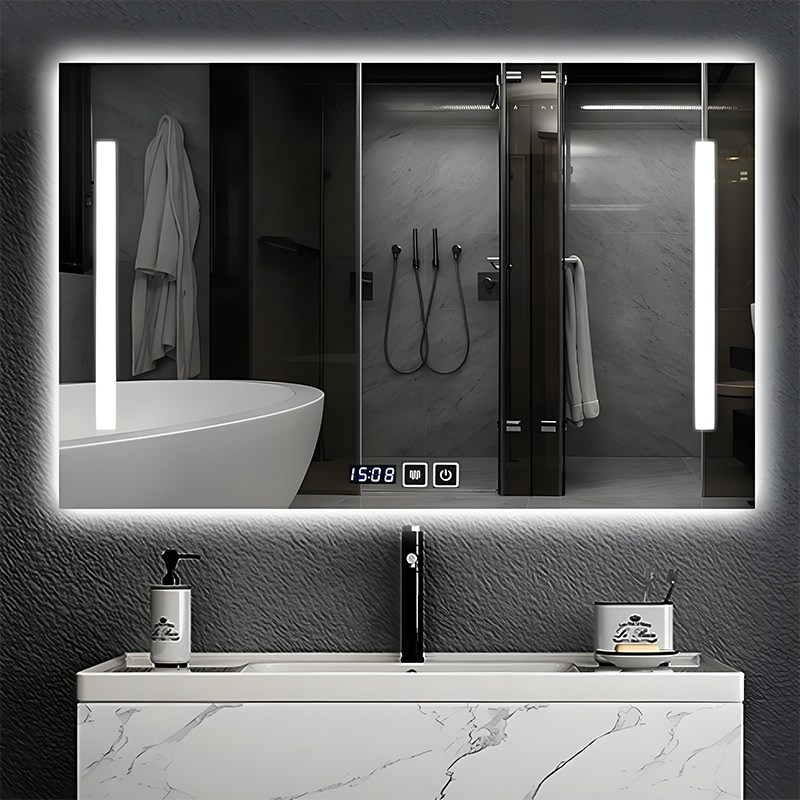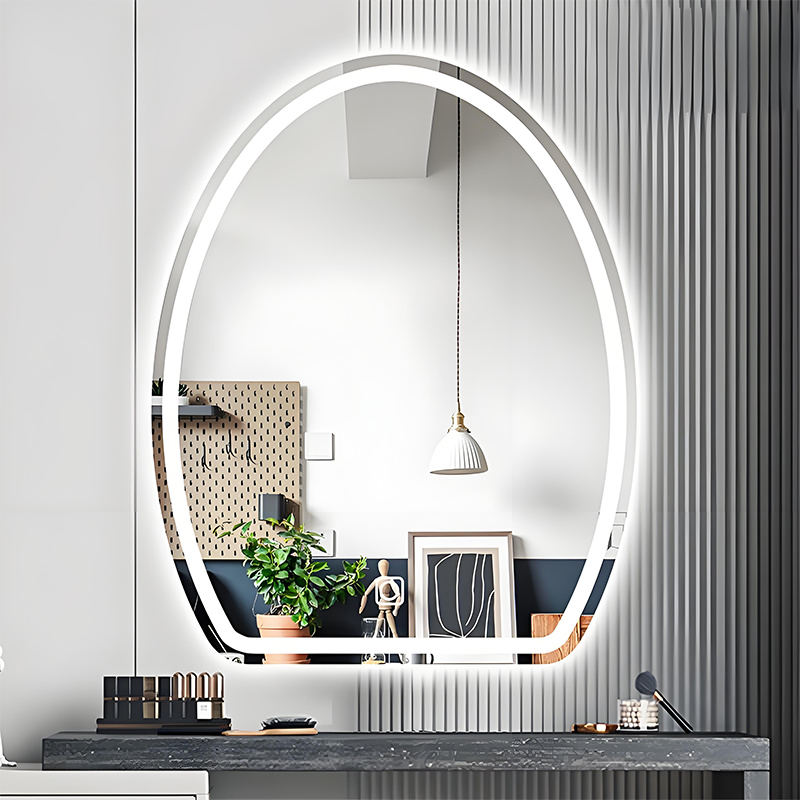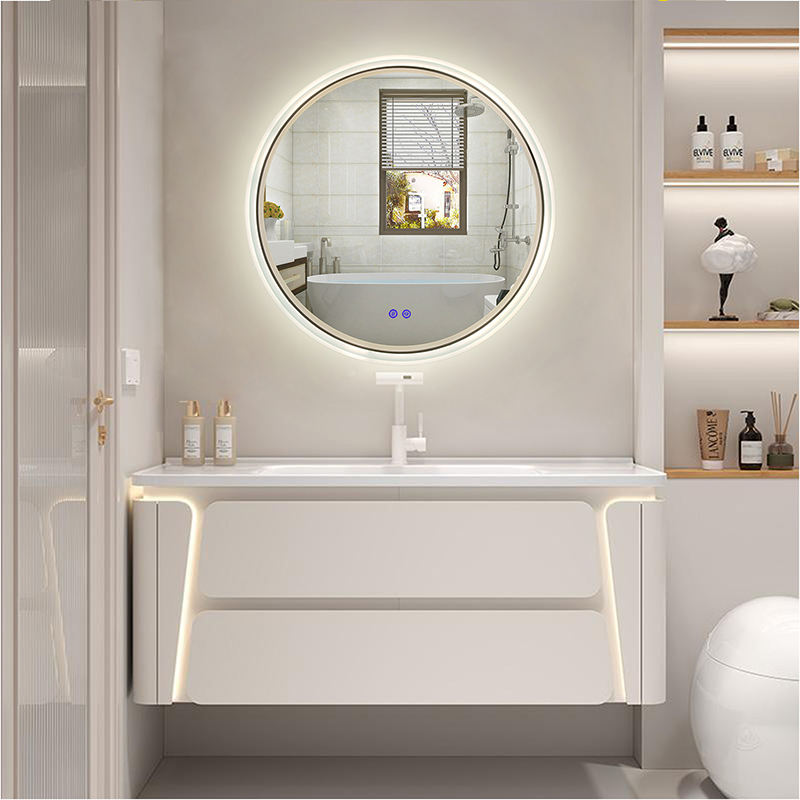1. Industry status: Bathroom mirror revolution under the wave of smart home
1. Global market growth engine
According to a report by Market Research Future, the global smart mirror market is expected to grow from $3.08 billion in 2024 to $15 billion in 2035, with a compound annual growth rate (CAGR) of 15.48%. Driving factors include:
Consumption upgrade: The pursuit of "bathroom aesthetics" by the European and American middle class has driven the demand for high-end mirrors (such as frameless design and LED ambient lighting)
Technology penetration: The popularization of IoT technology enables mirrors to integrate health monitoring (such as skin analysis, weight recording), voice interaction and other functions
Environmental policy: EU ErP directive requires bathroom mirrors to consume less than 5W, forcing companies to develop low-power LED modules
As the world's largest exporter, China's exports of bathroom mirrors to the United States accounted for 38.08% in 2023, but the high-end market is still dominated by brands such as Electric Mirror and IKEA.
2. Technology differentiation: from "basic functions" to "scenario intelligence"
The current products are divided into three echelons:
Traditional mirror: 60%, mainly anti-fog and magnifying mirror functions, average price 50~150
Anti-fog mirror: eliminates fog through electric heating or nano-coating technology, with a premium of 30%-50%, becoming a rigid demand in the hot and humid areas of the Middle East and Southeast Asia
Smart bathroom mirror: integrated Bluetooth speaker, touch screen, AI health management, average price $300+, strong demand in North America and Northern Europe
Take Tengzhou Yuwei Electronics as an example. It has entered the German market through the combination of anti-fog mirrors + induction lighting. Its export volume in 2024 increased by 62% year-on-year.
2. The solution: Chinese companies’ “triple innovation”
1. Product innovation: accurately matching regional needs
European and American markets: Focus on "intelligent ecological linkage". For example, compatibility with Amazon Alexa to achieve "voice control of mirror headlights + news playback"
Middle East market: Strengthening "luxury design + moisture resistance", using gold-plated frame and IPX4 waterproof rating
Southeast Asian market: Launching "small size + fast installation structure" to meet the renovation needs of apartments and hotels
2. Breaking through certification barriers: building international compliance
Electrical safety: CE (EU), ETL (North America) certified
Environmental standards: RoHS lead-free and FSC sustainable forest certification (wooden frame)
Data privacy: GDPR compliance (smart mirror facial recognition function requires local storage)
3. Supply chain optimization: balance between cost and efficiency
Modular production: Guangdong Huangzhi Lighting assembles mirrors, LED modules and controllers in separate lines, shortening the delivery cycle to 15 days
Cross-border e-commerce direct delivery: through Amazon FBA or independent website dropshipping, reduce the middleman markup
3. Overseas customer acquisition practice: from "traffic hunting" to "precision cultivation"
1. Data-driven: Targeting high-value customers
Customs data mining: Use tools such as Panjiva to analyze the purchasing patterns of U.S. importers, such as “Q4 peak season stocking cycle”
Social media behavior analysis: Identify home building materials purchasing managers through LinkedIn Sales Navigator and push case videos in a targeted manner
2. Content Marketing: Building a Trust Chain
Video seeding: TikTok shows the "smart mirror morning wake-up scene" and embeds the #SmartBathroom tag
KOL evaluation: Invite North American home improvement blogger Ryan Serhant to evaluate the performance of anti-fog mirrors, and the conversion rate increased by 27%
3. Channel combination: B2B and DTC in parallel
Engineering channel: Participate in The Hotel Show in Dubai and connect with the purchasing departments of Marriott and Hilton
Retail channel: Enter Wayfair and Home Depot to use their "3D visualization tool" to show the installation effect
IV. Challenges and Countermeasures: Breaking the Stereotype of “Made in China”
1. Brand premium problem
Solution:
Set up a design center in Germany and hire local industrial designers
Launch sub-brands (such as VueSmart under Yuwei) and independently operate high-end lines
2. Shortcomings in after-sales service system
Localization services:
Cooperate with local installation companies to provide "48-hour on-site maintenance
Develop AR remote guidance applications to reduce labor costs
5. Future Outlook: From “Product Export” to “Standard Export”
Technical standards: Promote the China-led "Smart Bathroom Mirror Internet of Things Protocol" to become an ISO international standard
Model innovation: Trial of "Mirror as a Service" (MaaS), where users pay monthly for software updates and health data analysis




